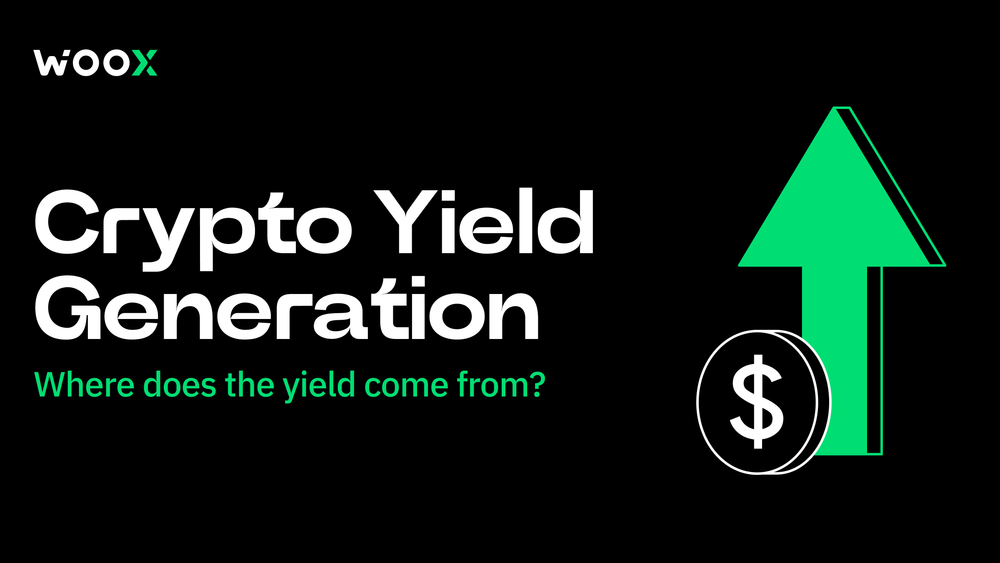Understanding crypto yield generation: Unlocking income beyond price appreciation
In the world of digital assets, yield generation goes beyond mere price appreciation: it's about actively earning income from crypto holdings.
Unlike passive asset appreciation, yield represents income streams derived from various economic activities within the crypto finance ecosystem. This includes staking rewards, lending interest, liquidity provision fees, and more.
As the landscape evolves rapidly, distinct models like centralized finance (CeFi) and decentralized finance (DeFi), alongside innovations such as liquid staking and stablecoin yield protocols, are redefining how participants can generate sustainable income from their crypto portfolios.
Comprehensive crypto asset classes driving yield
Yield generation spans multiple asset classes, each offering distinct pathways to earning returns. At the core are native Layer 1 tokens such as Ethereum, Solana, and Avalanche. These assets enable holders to participate in staking and governance, earning rewards as validators or delegators help secure the network and influence protocol decisions.
This not only supports decentralization but underpins the issuance of staking rewards as compensation.
Liquid staking derivatives represent an innovative evolution in this space.
Tokens like stETH, rETH, and sfrxETH make staked assets tradable and composable within DeFi, overcoming the traditional illiquidity of staking. This creates the opportunity to layer yields by using these derivatives as collateral or providing liquidity elsewhere, expanding capital efficiency. Such composability has become a hallmark of modern yield strategies.
Stablecoins such as USDC, USDT, and DAI are fundamental building blocks for many yield protocols.
Their relative price stability allows holders to deploy capital for lending or liquidity provisioning without exposure to volatile asset prices. This results in yield generation grounded in lending interest or fees rather than token price swings.
Governance tokens distributed by DeFi protocols serve dual purposes by rewarding participation and incentivizing governance alignment.
Beyond their voting rights, these tokens often distribute yield rewards or entitle holders to protocol revenue sharing, creating an additional layer of income.
Finally, wrapped and synthetic assets amplify yield opportunities by enabling exposure to cross-chain assets and complex derivatives.
Their integration within DeFi protocols fosters advanced yield strategies that leverage diverse market dynamics.
Core yield generation mechanisms in depth
The primary yield mechanisms in crypto revolve around staking, lending, liquidity provision, and derivatives.
Staking on Proof-of-Stake (PoS) and Delegated Proof-of-Stake (DPoS) blockchains is among the most established.
Validators earn rewards funded by network inflation such as new tokens minted to secure consensus and transaction fees collected on-chain. This compensation incentivizes network security and decentralization, offering holders predictable income streams.
Liquid staking and its derivatives enhance these yields by freeing staked assets as tradeable tokens.
This unlocks capital that would otherwise remain locked, allowing users to layer multiple yield strategies simultaneously. As a result, liquid staking contributes significantly to yield composability and capital efficiency.
Crypto lending and borrowing operate within both centralized and decentralized frameworks. Centralized lending platforms manage credit risk and generate interest revenue while applying platform-specific risk premiums. Decentralized protocols utilize over-collateralized lending models with algorithmic interest rate adjustments to balance supply and demand. Liquidity mining incentives and native token rewards further augment yields in these ecosystems. Income arises from borrower interest, platform fees, and governance token incentives.
Liquidity provision in AMM (Automated Market Maker) protocols offers fee-based income proportional to swap volumes.
Providers earn transaction fees but face risks such as impermanent loss when asset prices diverge. Programs distributing governance tokens and sharing protocol revenues add to base fees, incentivizing liquidity. Sophisticated yield farmers employ auto-compounding vaults, cross-chain optimization, and leveraging to maximize returns while managing risks.
Derivatives and options markets introduce alternative yield strategies.
Writing covered calls generates premium income from options contracts, while flash loans and arbitrage executions create additional yield extraction methods. Structured products bundle these yield streams into accessible returns, increasing appeal to a wider investor base.
Economic sources of crypto yield explained
At their core, crypto yields reflect fundamental economic activity:
- Transaction and network fees are paid by users and distributed to validators and liquidity providers for enabling seamless operations.
- Inflationary token issuance funds staking rewards, aligning token supply growth with network security incentives.
- Borrower interest payments balance lending markets, compensating capital providers for liquidity risk.
- Governance token incentives motivate active protocol participation, ensuring ecosystem sustainability.
- Fee revenue from decentralized exchange operations and automated market making forms a continuous income source for liquidity providers.
These economic components interplay to create diversified, sustainable yield streams across the crypto finance ecosystem.
Risk, trade-offs, and yield sustainability
Despite the promise, crypto yield generation is not without risks. Smart contract vulnerabilities and systemic protocol failures can lead to significant losses.
Market volatility introduces impermanent loss and correlation risks, particularly for liquidity providers exposed to fluctuating asset prices.
On centralized platforms, counterparty and custody risks require due diligence. Importantly, sustainability of yield depends on underlying value creation rather than transient yield chasing, necessitating careful risk management and protocol vetting by participants.
Comparative view: CeFi yield products vs DeFi yield strategies
Centralized finance yield products offer ease of use, custodial convenience, and relatively stable returns. However, they impose counterparty risks and limit user control.
In contrast, decentralized finance yields provide greater autonomy, potentially higher risk-adjusted returns, and composability, albeit with increased complexity and protocol risks.
A trend toward convergence is emerging as hybrid solutions seek to deliver the best of both worlds: seamless user experience from the centralized exchanges combined with enhanced yield opportunities coming from DeFi protocols.
Future outlook and innovations in crypto yield generation
Looking ahead, multi-chain yield strategies and cross-protocol composability will dominate innovation, enabling more sophisticated, capital-efficient income generation. Liquid staking products will continue expanding, fueling DeFi yield layering.
Integration of real-world assets (RWA) into yield protocols promises new income avenues beyond purely crypto-native assets. WOO X has recently launched a new earn product with yield coming from high yield corporate bond directly made available as a vault.
Simultaneously, regulatory frameworks will shape product design, driving risk transparency and management.
Closing remarks
Crypto yield fundamentally arises from diverse economic activities such as network security, lending, liquidity provision, and user governance incentives which transform digital assets into productive, income-generating tools.
As yield becomes an essential utility in crypto finance, informed, risk-conscious participation is crucial to navigate this evolving ecosystem.
By understanding the mechanisms and risks underlying yield opportunities, investors can strategically harness the power of crypto to generate sustainable returns beyond price appreciation alone.
Disclaimer
The information provided in this article is for general informational purposes only and does not constitute financial, investment, legal advice or professional advice of any kind. While we have made every effort to ensure that the information contained herein is accurate and up-to-date, we make no guarantees as to its completeness or accuracy. The content is based on information available at the time of writing and may be subject to change.
Cryptocurrencies and related products involve significant risk and may not be suitable for all investors. The value of digital currencies and products for which digital currencies are the underlying assets can be extremely volatile, and you should carefully consider your investment objectives, level of experience, and risk appetite before participating in any staking or investment activities.
We strongly recommend that you seek independent advice from a qualified professional before making any investment or financial decisions related to cryptocurrencies and related products. We shall in NO case be liable for any loss or damage arising directly or indirectly from the use of or reliance on the information contained in this article.


